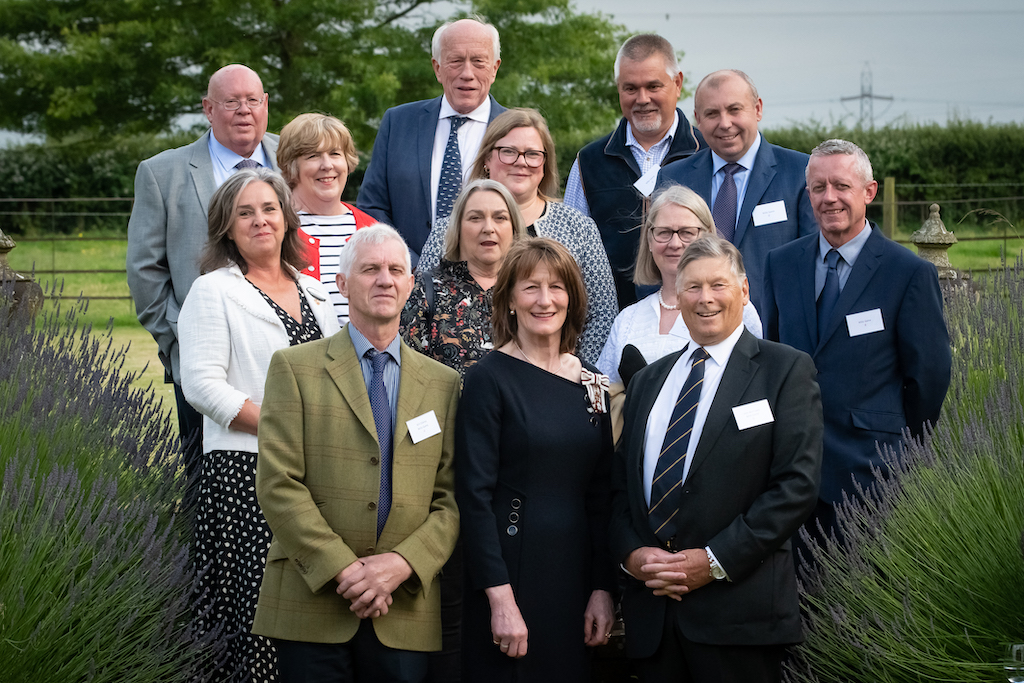With the changing of the clocks and the lengthening days of spring, I set myself the challenge of walking from some of the lowest ground in the county to the highest point. Shropshire is crossed by several long-distance walking routes. I aimed to link two of the best of these in one great big Shropshire walk.
I start out from Highley at around 8am. The first three miles of the route follow the Severn Way. This is the longest waterside walk in Britain and tracks the river from source to sea. High pressure dominates the weather forecast so I am hopeful of a dry day. The spring sunlight lacks the warmth needed to burn off the mist that sits in the valley. There is not a breath of wind and the only movement is the gentle push of the water on its long journey towards the sea.
Eventually, I follow a footpath away from the river and up through farmland towards the village of Kinlet. Suddenly, the fields are alive with skylark song. I think the skylark has one of the most uplifting songs of all British birds. In his poem The Lark Ascending, George Meredith pays homage to the way that the skylark sings as it flies vertically upwards.
Skylarks nest on the ground and begin nesting in April. The height of the vegetation is crucial to allow the birds to access the nest site. Historically, when crops were mainly sown in spring, skylarks often had several broods through the spring and early summer. New crop varieties can be sown in the autumn. This means that skylarks can only have one brood as the crops are too tall for the birds to have later broods. This has led to an overall decline in the skylark population on many farms.
However, in these fields near Kinlet, it is skylark country. The farmer has clearly worked hard to encourage wildlife and it is wonderful to see and hear the results. I am standing in a field of shimmering winter wheat that would have been sown in the autumn. Amongst the wheat, small plots have been left bare to give space for skylarks to nest.
Continuing my walk, I reach the formal landscape of Kinlet Hall. In arable fields, trees tend to be restricted to hedgerows. They are often seen as a hindrance for large farm machinery. In the wood pasture of old parkland, trees are allowed to grow old in grace. All around me are veteran oaks. These ancient trees often develop heart rot and become hollow. This does not mean that the tree is dead as the xylem and phloem (parts of the tree that carry water and nutrients) are located just under the bark. As long as the bark is still intact, a hollow tree can continue to live for many years.
Veteran trees become fantastic habitats for owls, bats and all sorts of other wildlife that like to live in holes. Meanwhile, a myriad of interesting invertebrates are busy munching away on the rotten parts of the old tree. Deadwood beetles and the larvae of many hoverflies and craneflies depend on this food source. Beyond Kinlet Park, I aim for the distinctive crooked spire of Cleobury Mortimer Church. Along the edge of a field, a male hare breaks cover and bolts across the grass. Thickly built and powerful, hares have the ability to quickly accelerate and change direction rapidly. They breed in a shallow depression in the field called a form.
Beyond Cleobury Mortimer, the ground starts to climb towards the summit of Titterstone Clee. The haunting call of a curlew echoes through the mist, a sign that I am gaining height. They are another ground-nesting bird that can be found on Shropshire farmland, amongst the rushy margins at the edges of fields.
“I love long-distance walking. It gives time and space to think.”
I climb higher and higher. The sun is trying to burn through, but all the time the mist dominates and obscures the view. The ground gets damper and rockier. The vegetation becomes more rank. Purple moor grass and rush pasture begins to dominate. I love long-distance walking. It gives time and space to think. The gentle meanders and fertile plains of the river seem a distant memory. Sand and silt is replaced by hard rock at the summit of Titterstone Clee. The Dhustone has been quarried for many years on the hill. The final leg of my epic walk takes me from Titterstone Clee to the summit of Brown Clee. I am now following the Shropshire Way. I finish at the top of Abdon Burf. I have covered around 24 miles today.
The walk has taken me from the Severn, through farmland still alive with bird song where hares run free. I have explored the formal parkland of Kinlet Hall and the rough bounds of the Shropshire hills where wild ponies roam. As I stand at the highest point in Shropshire, I can hear a solitary skylark.
Do one thing for wildlife this month: The sight of a hare running across a field or boxing in the spring sunshine never fails to inspire me. They are one of my favourite British mammals. However, it is surprising how many mammals can be found on your doorstep. The People’s Trust for Endangered Species want people to help find out what mammals use our towns and villages as a place to live. The Living With Mammals survey needs volunteers to survey a garden or allotment for a minimum of eight weeks between April and June. More information can be found at www.ptes.org
Each month we will be following the seasons around us, featuring the What’s What Wildlife Diary with our nature expert Edward Andrews, MSc.





